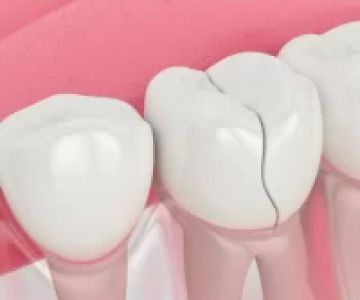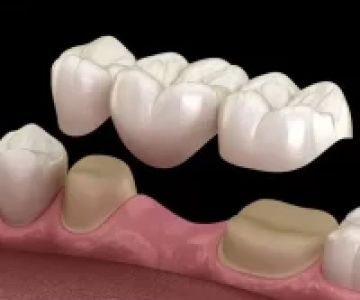How to Deal with Early Tooth Decay in Toddlers
- 1. Understanding Early Tooth Decay in Toddlers
- 2. Signs of Early Tooth Decay in Toddlers
- 3. Prevention Strategies for Tooth Decay in Toddlers
- 4. Treating Early Tooth Decay in Toddlers
- 5. When to Visit the Dentist for Toddler Tooth Decay
1. Understanding Early Tooth Decay in Toddlers
Tooth decay in toddlers is a common issue that can cause long-term dental problems if not addressed early. It occurs when bacteria in the mouth feed on sugars and produce acids that erode the tooth enamel. Early tooth decay in toddlers, also known as "baby bottle tooth decay," can be particularly concerning as it affects their baby teeth, which are essential for proper speech development, chewing, and even the alignment of adult teeth. Understanding the causes and consequences of early tooth decay is crucial for parents who want to ensure their toddlers' oral health.
2. Signs of Early Tooth Decay in Toddlers
Detecting early tooth decay in toddlers can sometimes be challenging as they may not exhibit clear signs. However, there are certain indicators that parents should look for:
- White Spots: The earliest sign of tooth decay often appears as white spots on the teeth, especially near the gum line. These spots indicate enamel demineralization.
- Brown or Black Stains: As decay progresses, white spots may turn into brown or black stains that are visible on the teeth.
- Tooth Sensitivity: Your toddler might become sensitive to hot, cold, or sweet foods, indicating that the enamel is wearing away and the tooth is vulnerable.
- Changes in Behavior: If your toddler shows signs of discomfort, such as crying or avoiding certain foods, this could be a sign that their teeth are causing pain due to decay.
3. Prevention Strategies for Tooth Decay in Toddlers
Preventing early tooth decay in toddlers is essential for maintaining their oral health. Here are some effective strategies:
- Limit Sugary Foods and Drinks: Avoid giving your toddler sugary snacks or drinks, including fruit juices, that can contribute to tooth decay. Opt for water or milk instead.
- Proper Tooth Brushing: Brush your toddler’s teeth twice a day using a soft toothbrush and fluoride toothpaste. Make sure to gently clean their gums and all surfaces of their teeth.
- Introduce a Healthy Diet: Providing a balanced diet with plenty of fruits, vegetables, and whole grains helps promote strong teeth and overall health.
- Use a Clean Cloth or Gauze for Infants: For babies who don’t yet have teeth, use a clean cloth or gauze to wipe their gums after feedings to remove bacteria and food particles.
4. Treating Early Tooth Decay in Toddlers
If your toddler shows signs of early tooth decay, prompt treatment is essential. Early intervention can prevent the problem from worsening and leading to more severe dental issues later on. Treatment options may include:
- Fluoride Treatment: If caught early, fluoride treatments can help remineralize the enamel and prevent further decay.
- Dental Fillings: For more advanced decay, a dentist may recommend fillings to restore the damaged tooth and prevent further breakdown.
- Dental Sealants: Applying sealants to the chewing surfaces of the back teeth can help protect them from decay in the future.
5. When to Visit the Dentist for Toddler Tooth Decay
It’s essential to establish a dental routine early in your child’s life. Schedule your toddler's first dental visit by their first birthday or when their first tooth appears. Regular visits to the dentist will help catch any early signs of tooth decay and provide opportunities for preventive care. If you notice any signs of tooth decay, such as white spots or discomfort, it’s important to visit a pediatric dentist immediately for evaluation and treatment. Early intervention is key to avoiding more serious problems down the line.







 Woodbridge Dental Group and Orthodontics4.0 (265 review)
Woodbridge Dental Group and Orthodontics4.0 (265 review) Village Dentistry4.0 (130 review)
Village Dentistry4.0 (130 review) Gentle Dental Downtown Portland4.0 (123 review)
Gentle Dental Downtown Portland4.0 (123 review) Ossen Stephen M DDS5.0 (4 review)
Ossen Stephen M DDS5.0 (4 review) Nu Smile Aligner5.0 (1 review)
Nu Smile Aligner5.0 (1 review) Smiles Divine Dental4.0 (25 review)
Smiles Divine Dental4.0 (25 review) The Importance of Oral Health Education During Pregnancy for a Healthy Pregnancy
The Importance of Oral Health Education During Pregnancy for a Healthy Pregnancy Best Tips for Brushing Your Teeth Properly for Healthy Gums: Essential Techniques for Oral Health
Best Tips for Brushing Your Teeth Properly for Healthy Gums: Essential Techniques for Oral Health Why Skipping Dental Checkups Can Lead to Bigger Oral Health Problems
Why Skipping Dental Checkups Can Lead to Bigger Oral Health Problems Advantages of Porcelain Dental Restorations
Advantages of Porcelain Dental Restorations How Can Diabetes Cause Tooth and Gum Problems? Preventing and Managing Oral Health Issues
How Can Diabetes Cause Tooth and Gum Problems? Preventing and Managing Oral Health Issues Healthy Habits for Promoting Good Oral Health and Hygiene: Tips for a Healthy Smile
Healthy Habits for Promoting Good Oral Health and Hygiene: Tips for a Healthy Smile